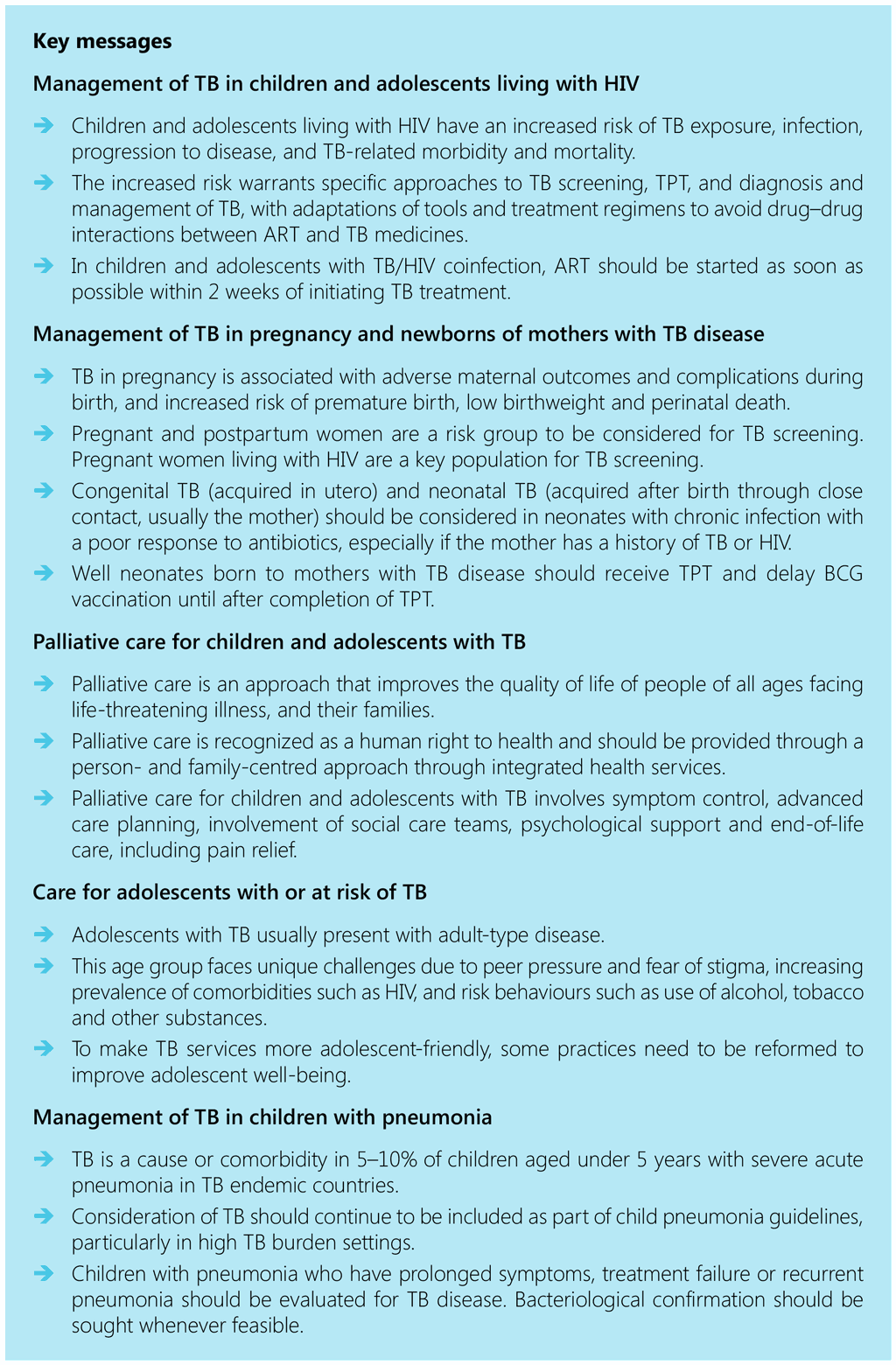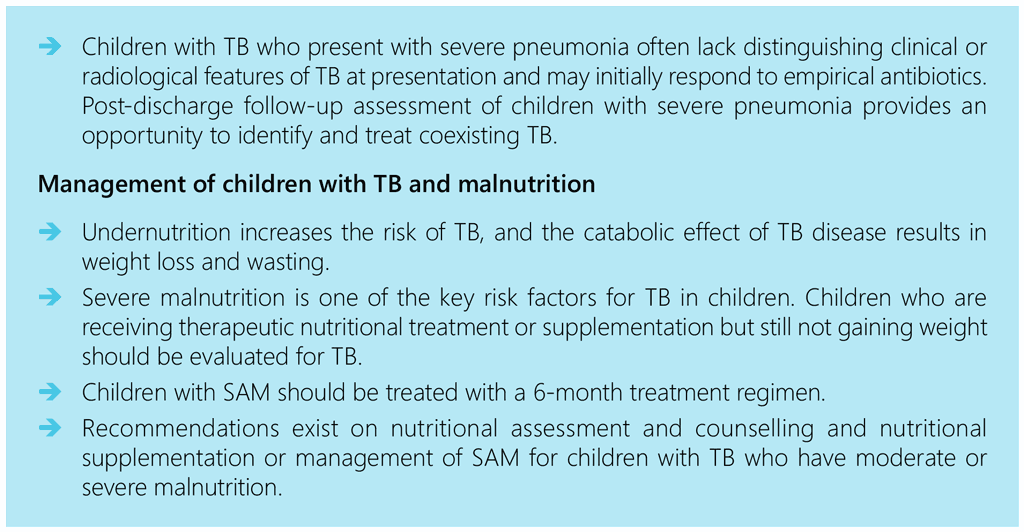Annex 1. Selected resources on child and adolescent TB
Roadmap
Roadmap towards ending TB in children and adolescents, second edition. Geneva: World Health Organization; 2018 (https://apps.who.int/iris/bitstream/handle/10665/275422/9789241514798-eng.
pdf?sequence=1&isAllowed=y).
WHO operational handbooks
WHO operational handbook on tuberculosis. Module 1: prevention – tuberculosis preventive treatment. Geneva: World Health Organization; 2020 (https://www.who.int/publications/i/item/9789240002906).
 Feedback
Feedback

